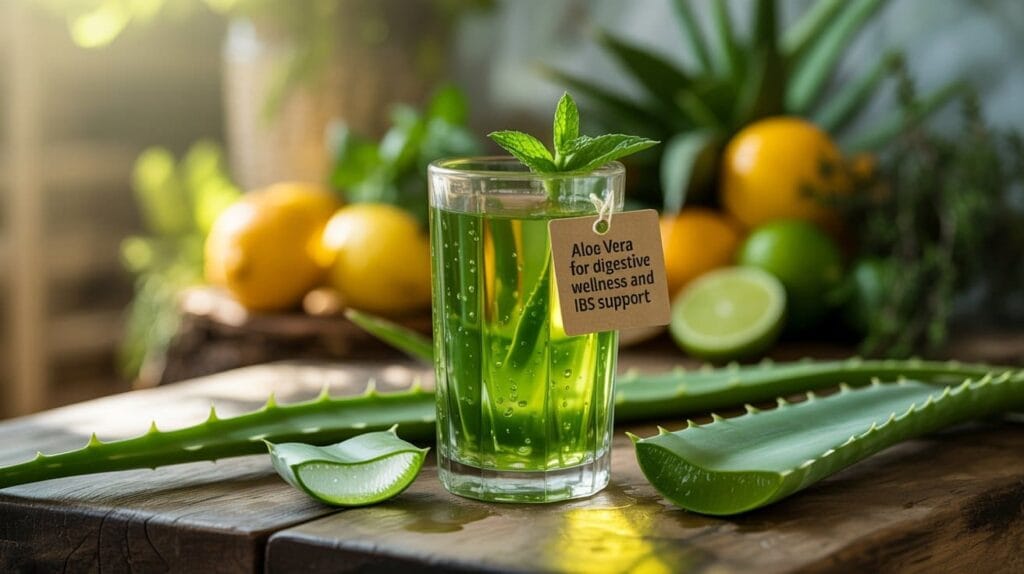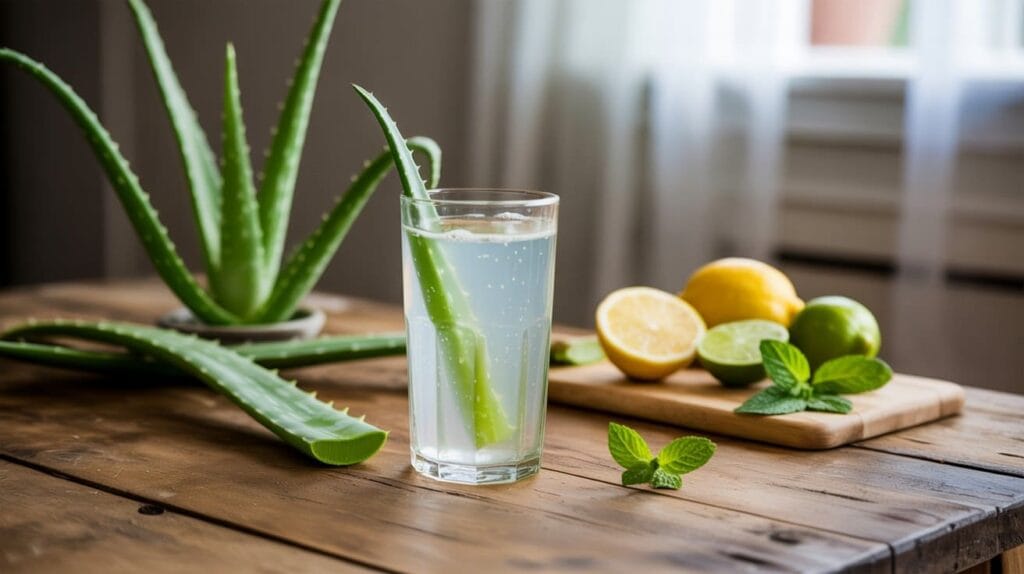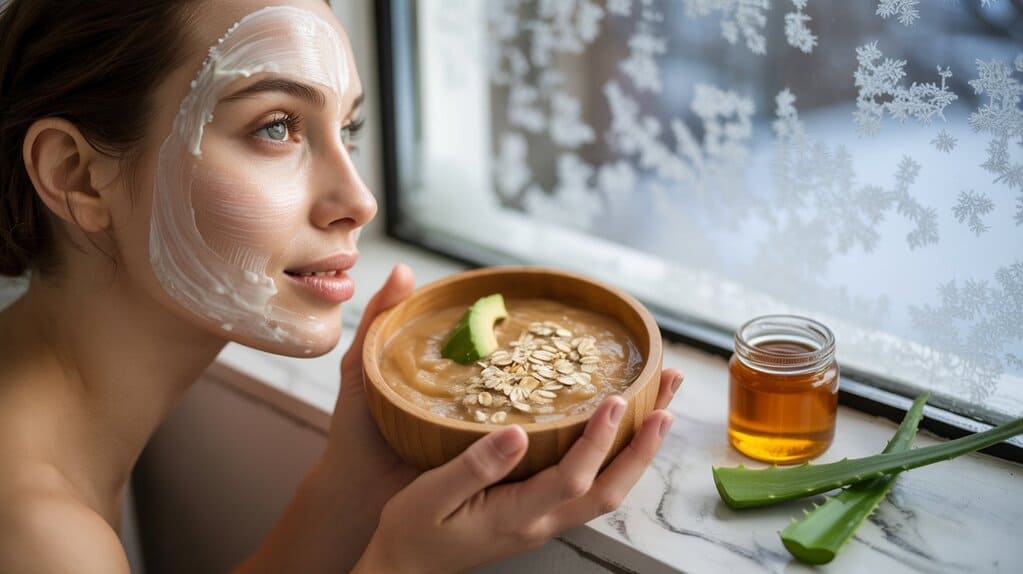
Introduction
Aloe vera (Aloe barbadensis miller) is a succulent plant renowned for its extensive medicinal and nutritional properties. Originating from the Arabian Peninsula, it has been utilized for centuries across various cultures for its therapeutic benefits. This article delves into the multifaceted advantages of Aloe vera, supported by recent scientific studies and clinical trials, highlighting its role in modern medicine and nutrition.
Botanical Profile and Active Constituents
Aloe vera thrives in arid climates, characterized by its thick, fleshy leaves that store water, enabling the plant to endure prolonged droughts. The leaves contain a gel-like substance rich in bioactive compounds, including:
- Vitamins: A, C, E, and B12
- Minerals: Calcium, magnesium, zinc, and selenium
- Enzymes: Amylase, catalase, and peroxidase
- Polysaccharides: Acemannan and glucomannan
- Anthraquinones: Aloin and emodin
- Fatty acids: Lupeol and campesterol
- Hormones: Gibberellins and auxins
- Amino acids: Essential and non-essential types
These constituents contribute to Aloe vera’s diverse therapeutic effects, ranging from anti-inflammatory to antimicrobial properties PMC.

Medicinal Benefits of Aloe Vera
1. Skin Health and Wound Healing
Aloe vera gel is widely recognized for its efficacy in treating burns, wounds, and skin irritations. Clinical studies have demonstrated that Aloe vera accelerates wound healing by enhancing collagen synthesis and reducing inflammation. A systematic review published in the Journal of Burn Care & Research concluded that Aloe vera significantly improves healing times for first- and second-degree burns Wikipédia.
2. Anti-Inflammatory and Antioxidant Properties
The plant’s anti-inflammatory effects are attributed to compounds like C-glucosyl chromone, which inhibit cyclooxygenase pathways, and anthraquinones, which reduce prostaglandin E2 production. Additionally, Aloe vera’s antioxidant properties help neutralize free radicals, mitigating oxidative stress and associated cellular damage PMC.
3. Digestive Health and Laxative Effects
Aloe vera latex contains anthraquinones, potent natural laxatives that stimulate peristalsis and increase intestinal water content. While effective for short-term constipation relief, prolonged use is not recommended due to potential adverse effects. Aloe vera gel, on the other hand, has been shown to soothe the digestive tract, alleviate symptoms of irritable bowel syndrome (IBS), and promote gut health WebMD.
4. Blood Sugar Regulation
Emerging research indicates that Aloe vera may aid in managing blood glucose levels. A study published in Medical News Today reported that Aloe vera supplementation improved insulin sensitivity and reduced fasting blood glucose levels in individuals with prediabetes and type 2 diabetes. However, more extensive human trials are necessary to confirm these findings Medical News Today.
5. Immune System Support
Aloe vera’s polysaccharides, particularly acemannan, play a crucial role in modulating the immune system. Research has shown that acemannan stimulates macrophages to produce interleukin-1 and tumor necrosis factor, enhancing the body’s defense mechanisms against pathogens PMC.

Nutritional Value of Aloe Vera
Beyond its medicinal properties, Aloe vera offers substantial nutritional benefits:
- Vitamins : Essential for skin health, immune function, and antioxidant protection.
- Minerals : Vital for bone health, enzyme function, and cellular processes.
- Amino Acids : Support protein synthesis and tissue repair.
- Fatty Acids : Contribute to anti-inflammatory effects and cellular integrity.
Incorporating Aloe vera into the diet, through juices or supplements, can provide these nutrients, promoting overall health and well-being.
Culinary and Cosmetic Applications
Aloe vera’s versatility extends to culinary and cosmetic uses:
- Culinary : Aloe vera juice is utilized in beverages and health supplements for its hydrating and digestive benefits.
- Cosmetic : Aloe vera is a common ingredient in skincare products, offering moisturizing, anti-aging, and soothing effects for conditions like acne and psoriasis Mayo Clinic.
Conclusion
Aloe vera stands as a testament to nature’s healing prowess, offering a plethora of medicinal and nutritional benefits. From enhancing skin health to supporting digestive and immune functions, its applications are vast and varied. As research continues to unfold, Aloe vera’s role in modern medicine and nutrition is poised to expand, reaffirming its status as a valuable natural resource.
References
- Surjushe, A., Vasani, R., & Saple, D. (2008). Aloe vera: A short review. Indian Journal of Dermatology, 53(4), 163-166. https://pmc.ncbi.nlm.nih.gov/articles/PMC2763764/
- Foster, M. (2011). Evaluation of the nutritional and metabolic effects of Aloe vera. National Center for Biotechnology Information. https://www.ncbi.nlm.nih.gov/books/NBK92765/
- Sánchez, M., & González, M. (2020). Pharmacological update properties of Aloe vera and its applications. National Center for Biotechnology Information. https://pmc.ncbi.nlm.nih.gov/articles/PMC7144722/
- Vogler, B. K., & Ernst, E. (1999). Aloe vera: A systematic review of its clinical effectiveness. British Journal of General Practice, 49(447), 823-828. https://bjgp.org/content/49/447/823
- Medical News Today. (2021). Aloe vera: 9 health benefits. https://www.medicalnewstoday.com/articles/318591
- WebMD. (2024). Aloe vera: Health benefits, common uses, side effects. https://www.webmd.com/diet/supplement-guide-aloe-vera
- Mayo Clinic. (2025). Aloe. https://www.mayoclinic.org/drugs-supplements-aloe/art-20362267
- Verywell Health. (2023). 9 evidence-based Aloe vera benefits, according to a registered dietitian. https://www.verywellhealth.com/aloe-vera-benefits-8695016
- Wikipedia. (2025). Aloe vera. https://en.wikipedia.org/wiki/Aloe_vera
- Healthline. (2022). 5 healthy benefits of drinking Aloe vera juice. https://www.healthline.com/health/food-nutrition/aloe-vera-juice-benefits





